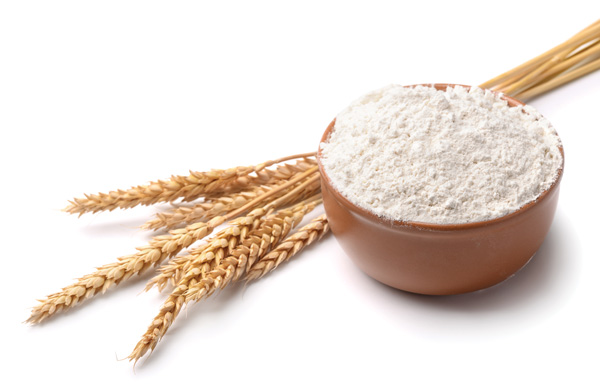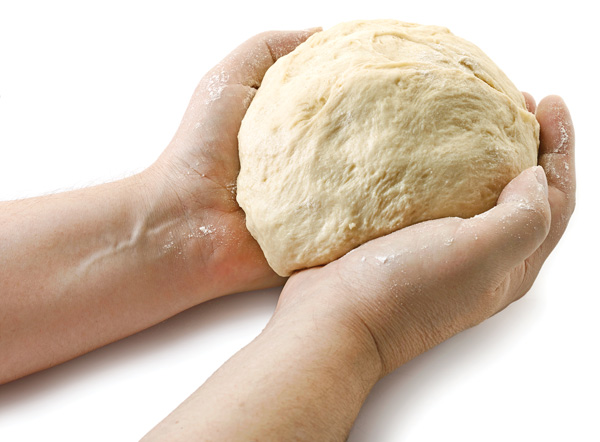Proofing cabinets are essential for pizza operations that make crust in-house and/or bake from scratch. Unlike the open air, the temperature and humidity levels reached in a proofing cabinet are ideal for allowing dough to rise to perfection.
“With proofing cabinets, it’s a much more controlled process and more consistent than relying on the environment’s conditions,” says Juan Martinez, principal at Profitality, a foodservice consulting firm based in Miami. “It’s important to note that thicker or deep-dish pizza crusts require more proofing.”
The design of some proofers allows them to double as a holding cabinet. These heated proofing/holding cabinets are suitable for use at pizza operations looking to proof dough but also hold pizzas, chicken wings and other hot products. Additionally, a combination of the heat from the heating functionality and the moisture from the proofing mode can prevent cooked food from drying out.
These units typically accomplish proofing within 45 minutes to an hour at temperatures ranging from between 80 degrees F and 120 degrees F. Richer items and those with a higher butter content require lower proofing temperatures. Sweet yeast dough products require a full proof temperature of 95 degrees F to 100 degrees F, with a humidity level of 80 percent to 85 percent. Proofing bread doughs requires the same temperature and humidity.
Picking the Appropriate Proofer
 “Pizza operators need to determine what they need to produce or how much, and take into account the needs of the business in terms of proofer size,” says Martinez.
“Pizza operators need to determine what they need to produce or how much, and take into account the needs of the business in terms of proofer size,” says Martinez.
Cabinets typically measure 5 to 6 feet tall and 25, 26 or 30 inches wide. These units offer varying pan capacities, depending on the volume of product being proofed. The four main sizes are undercounter, half-height, ¾-height and full height. Measuring 69 to 72 inches high, full-size cabinets typically hold 17 to 20 18-inch-by-26-inch sheet pans spaced 3 inches apart. Operators can also opt for three-quarter size proofers to hold 12 pans and half-size units that accommodate 8 pans.
Proofing cabinets come with three different interior configurations: universal runners, which can hold both steam table pans and sheet pans; fixed wire slides, which can hold steam pans that have lesser depth and sheet pans and lip loads, which only hold sheet pans. The cabinet slides come in chrome-plated wire, aluminum or stainless materials. These components are usually removable for cleaning as well as adjustment based on the product being proofed.
This equipment is available with either stainless-steel or aluminum construction. Operators can choose between insulated or noninsulated. Although foam or fiberglass insulated cabinets have a higher price tag, these cabinets help prevent heat loss, release less heat to the kitchen and have cool exteriors.
Doors are available in solid, glass and polycarbonate versions. The benefits of solid doors include added energy efficiency, insulation and heat recovery times. Because they don’t allow viewing of the proofer contents, operators tend to open units with solid doors more often, which may result in heat loss and inconsistent product quality. Polycarbonate doors provide easier viewing to the cabinet’s contents. The downside is this material is not as durable, leading to scratches and cloudiness that can obscure the door’s transparency. Glass doors make it easier to check on products and resist scratching. Though this type provides better insulation and a longer service life than polycarbonate doors, these units are pricier. The doors can be Dutch or split doors or full doors.
Standard features include caster mounting for ease of mobility and adjustable digital temperature controls with LCD readouts or a thermostat, which allow pizza operators to monitor the cabinet’s temperature.
There are separate controls or thermostats for heating elements for the air and also for the water vat or under pan. These are either manual or thermostatic. Moisture control is important when proofing as is maximum air flow. Consistent top to bottom heat is necessary to effectively proof pizza dough at all pan levels. Two thermostats provide better control of the water temperature and, therefore, the humidity inside the cabinet. Single thermostat models are available, as well, and offer set-it-and-forget-it operation.
Operators can choose from two main styles of heater proofers — reach-in cabinets and pass-through cabinets. Reach-in cabinets will allow an operator to load and unload pans from the front of the heater proofer, while pass-through cabinets provide pan loading and unloading from the back and front of the heater proofer.
Cleaning and Maintenance
 To maximize the service life of a proofer, follow factory instructions for daily cleaning and routine maintenance schedules. Before this can take place, though, turn off the equipment and allow it to cool.
To maximize the service life of a proofer, follow factory instructions for daily cleaning and routine maintenance schedules. Before this can take place, though, turn off the equipment and allow it to cool.
Clean the interior daily and wipe away any spills on the exterior and drip trays. Remove and clean the heated hot water pans daily. Remove tray guides and humidifier pans before wiping the interior with mild soap and water. Use soap and water to wipe the exterior and then polish it with stainless-steel cleaner.
“Pizza operators should make sure the water supplied to the proofer is treated, or it will create scale and the dough won’t proof correctly,” says Joey Byrne, operations manager at EMR, a Baltimore-based service agent.
Every six months or at the time of service, clean the louvered vents and electronic controller cooling fans, clearing them of lint and dust buildup. “Twice a year, the proofer’s drains should be blown out,” says Byrne. “Gaskets and door hinges should be replaced as needed and fans checked regularly,” says Byrne.
The heated hot water pan is an often-overlooked component. When forgotten, the pan can accumulate heavy mineral buildup that may lead to premature corrosion resulting in leaks and interior deterioration. Each month, clean the pan with a solution of hot water and vinegar. The solution should remain in the pan overnight, then the pan rinsed and wiped clean.
“Make sure the gaskets are good, otherwise cold air will infiltrate the unit and impact the proofing process,” adds Byrne.
An operator should call for service when the unit does not heat to the desired temperature after adjusting the controls. Service also is necessary if the equipment does not heat after verifying that the power source works or if the heat basin has been flooded with water.
Overheating, very high humidity or not humidifying at all are reasons to call a service agent. “It’s the combination of humidity and temperature that does the proofing,” says Byrne. “If you don’t have enough water and the air temperature is higher than the humidity or vice versa, pizza operators will run into problems.”
Depending on the use and care of the equipment, most proofer cabinets should last between 5 and 20 years. Regular maintenance and cleaning, along with the operating environment, play a crucial role in a proofer’s service life. “Signs the proofer is not operating properly are if the dough is not rising or comes out dry,” says Byrne. “If there is too much heat and not enough humidity, the dough will dry out; if there is too much humidity and not enough heat, it will be damp.”
If the structure and supports weaken and become unsafe for operating, the proofer will need replacing. “Signs a proofer needs replacing are doors that are falling off, significant leaks or rust, if product is not consistent or if there are a lot of service calls,” says Byrne.
The operator should take care to not flood the heating cabinet with water or use excessive amounts of water to clean the interior. “The proofer service life depends on the water quality and maintenance,” says Byrne. “It can be 5 to 30 years.”



